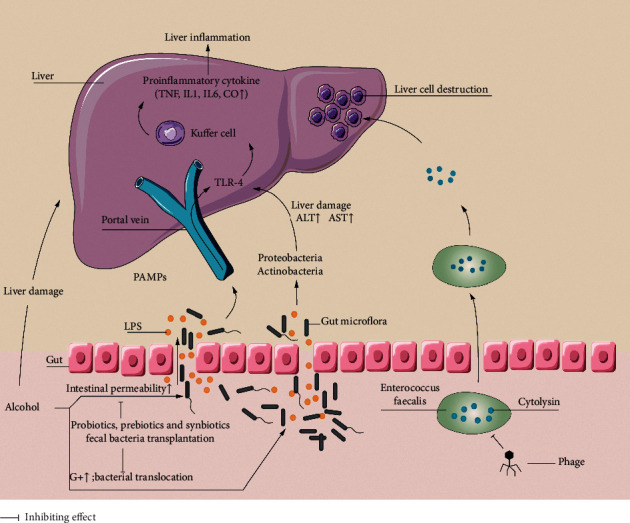Figure 1.

Mechanism of interaction between alcohol-related liver disease and intestinal microbiota. In alcohol-related liver disease, after long-term exposure to alcohol, the liver is directly damaged by alcohol; the expression of tight junction protein in intestinal epithelial cells decreases, the intestinal permeability increases, and the intestinal barrier function is damaged, accompanied by the higher level of endotoxemia. Intestinal microbiota disorders, intestinal microorganisms, bacterial metabolites, toxins, etc., are transferred from the intestinal tract to the liver, resulting in liver damage. LPS produced by Enterogenous bacteria binds to TLR-4, mediates the activation of liver Kupffer cells. The activated Kupffer cells release a large number of proinflammatory cytokines, induce liver inflammation. Cytolysin produced by Enterococcus faecalis has a dissolving effect on liver cells. Phages can target Enterococcus faecalis and reduce the liver damage. Probiotics, prebiotics, and fecal bacteria transplantation etc., can improve the liver function of patients with alcohol-related liver disease by regulating intestinal microbiota and improving intestinal mucosal permeability. LPS: lipopolysaccharide; G+: Gram-positive bacteria; TLR-4: toll-like receptor 4; PBMCs: peripheral blood mononuclear cells; IL-1: interleukin-1; TNF: tumor necrosis factor; PAMP: pathogen-associated molecular pattern; CO: carbon monoxide; ALT: alanine transaminase; AST: aspartate transaminase.
